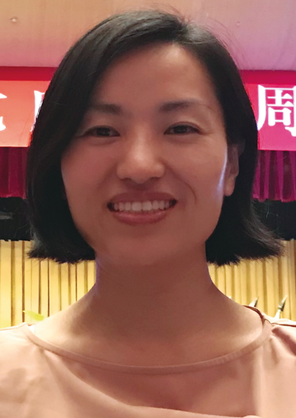Guangqin Li
Graphical Abstract
Guangqin Li
The author presented on this page has published her first article as a submitting corresponding author in Angewandte Chemie:
“Tailoring the Electronic Structure of an Atomically Dispersed Zinc Electrocatalyst: Coordination Environment Regulation for High Selectivity Oxygen Reduction”: Y. Jia, Z. Xue, J. Yang, Q. Liu, J. Xian, Y. Zhong, Y. Sun, X. Zhang, Q. Liu, D. Yao, G. Li, Angew. Chem. Int. Ed. 2021, doi.org/10.1002/anie.202110838; Angew. Chem. 2021, doi.org/10.1002/ange.202110838.
-
Position:
-
Professor, School of Chemistry, Sun Yat-sen University, Guangzhou (China)
-
Homepage:
-
-
ORCID:
-
-
Education:
-
2004–2008 B.S. Heilongjiang University, Harbin (China)
2008–2011 M.S. Zhengzhou University (China)
2011–2014 Ph.D. with Prof. Hiroshi Kitagawa, Kyoto University (Japan)
2015–2016 JSPS Research fellow with Prof. Hiroshi Kitagawa, Kyoto University (Japan)
-
Research:
-
Materials based on metal–organic frameworks, nanocomposites, hydrogen energy, electrocatalysis, hydrogen storage
-
Hobbies:
-
Jogging, swimming, playing badminton
The greatest scientific advance of the next decade will be the development of more and more clean energy products that will replace traditional energy sources in our lives and dominate the market.
Chemistry/science is fun because we can learn laws, create new things, and change the world.
My science “heroes” are the many scientists doing research in basic science and applications.
The most exciting time in my research is when I get a new finding or prove a previous assumption.
I chose my current career path because I am passionate about scientific research and like to explore the unknown.
I advise my students to keep expanding the depth and horizons of knowledge, learning the nature of science while staying creative.
The most important thing I teach my students is that they should help each other and make progress together.
My long-term goal is to produce H2 by electrocatalytic water splitting at a large scale to meet industrial needs and to increase the conversion efficiency of clean energy.
When I was a kid I wanted to be a scientist who explores the unknown and creates new inventions.
A good day at work starts with replying to emails and discussing the latest research results with my students.
The principal aspect of my personality is optimism, curiosity, and frankness.
What I appreciate most about my friends is their sincerity. They always encourage me when things aren't going so well and are also happy for my achievements.
The most important actions of a mentor are to lead by example, encourage students to be creative, help them develop problem-solving skills, and support them to realize their own dreams.
My favorite activity with my lab group is brainstorming, which we do every one to two weeks. Every student expresses their own views to help each other and further thinking in this process.
My favorite drink is red wine.
My top three films of all time are Harry Potter, Spirit: Stallion of the Cimarron, and The Rainbow Cat Blue Rabbit Fire Phoenix.
Behind the Science
Based on the previous reports that the activity of 2e−/4e− oxygen reduction reaction (ORR) pathways depends on the binding energy of intermediate *OOH with the electrocatalyst, we assumed that single-atom catalysts (SACs) with different coordination environments might exhibit different *OOH binding strengths. By virtue of the structure adjustability of MOFs, the functional groups of MOF ligands were regulated to generate SACs with different coordination environments, thus tailoring the activity of the 2e−/4e− ORR pathways. Our paper demonstrates the electronic structure difference of two SACs with different coordination environments and how this affects the activity of different ORR pathways. This study provides ideas for regulating the product selectivity of multi-electron electrocatalytic reactions.





